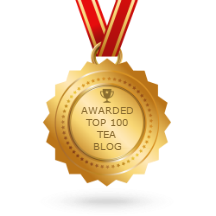
It’s hard to imagine that once upon a time I found the term “orange pekoe” to be such a mystery. It’s really quite simple. “Pekoe” is a common grading of Indian and Ceylonian teas that has several finer gradings (each indicated by an additional letter added to the left of the others).
Here is one description of these gradings:
- Pekoe – P – not a quality designation, just means a whole leaf tea mostly from India and Sri Lanka (formerly Ceylon)
- Orange Pekoe – OP — a slightly larger and possibly thinner tea leaf, but the “orange” doesn’t mean the color (legend says it’s the Dutch royal Family Orange Nassau)
- Flowery Orange Pekoe – FOP – the minimum grade for hand-plucked tea, the “flower” is the unopened bud of a tea leaf
- Golden Flowery Orange Pekoe – GFOP – means that certain leaves in the mix have a golden tip, which indicates higher quality
- Tippy Golden Flowery Orange Pekoe – TGFOP – most experts say this should be used when all tips are golden, unfortunately not always the case
- Finest Tippy Golden Flowery Orange Pekoe – FTGFOP – designates a super-premium specialty tea
- Special Finest Tippy Golden Flowery Orange Pekoe – SFTGFOP – another step up the grade scale
You will also see numbers after some of the above (example: SFTGFOP-1) or even further grading terms (example: SFTGFOP-Extra Fancy or SFTGFOP-Extra Special). There are also broken leaf grades, since this tea is usually a black tea and is often chopped into smaller pieces. Take the above grade designations and add a “B” (example: GFBOP for Golden Flowery Broken Orange Pekoe).
Another definition (paraphrased):
A 7-tier grading system for black tea that relates to the size and physical condition of the leaf rather than a particular kind of tea, flavor, or quality. Often, Orange Pekoe teas are blends, with “orange pekoe” indicating that the tea is the second highest grade in the system. “Pekoe” is from the Chinese word meaning “white” as in the 2-leaves-and-a-bud combo plucked from the branch tip. When applied to Indian and Ceylonian teas, it indicates whole leaves that are uniform in size, even those from lower on the branch of the tea bush (Camellia Sinensis). “Orange” could either mean the Dutch House of Orange Nassau or the Chinese practice from ages past of adding orange blossoms to the tea leaves for flavor.
There are other definitions being bandied back and forth, but the main thing is these grades are a general guide. The more letters, the higher grade the tea is supposed to be. Of course, it’s not an exact system. While I have confidence in the honesty of tea growers to take care to label their teas accurately, the process involves some subjectivity on their part. In short, buyer beware. And have a bit of understanding. The people labeling these teas are working with large batches of tea leaves. Your pouch or tin is a small part of that batch and is not necessarily representative of the overall quality, so don’t downgrade the rest if you happen to get a bit that is “off.”
Whichever grade of Pekoe you choose, steep it up right and you will have a tasty cuppa!
Don’t miss A.C.’s blog, Tea Time with A.C. Cargill!
© Online Stores, Inc., and The English Tea Store Blog, 2009-2014. Unauthorized use and/or duplication of this material without express and written permission from this article’s author and/or the blog’s owner is strictly prohibited. Excerpts and links may be used, provided that full and clear credit is given to Online Stores, Inc., and The English Tea Store Blog with appropriate and specific direction to the original content.



Leave a comment